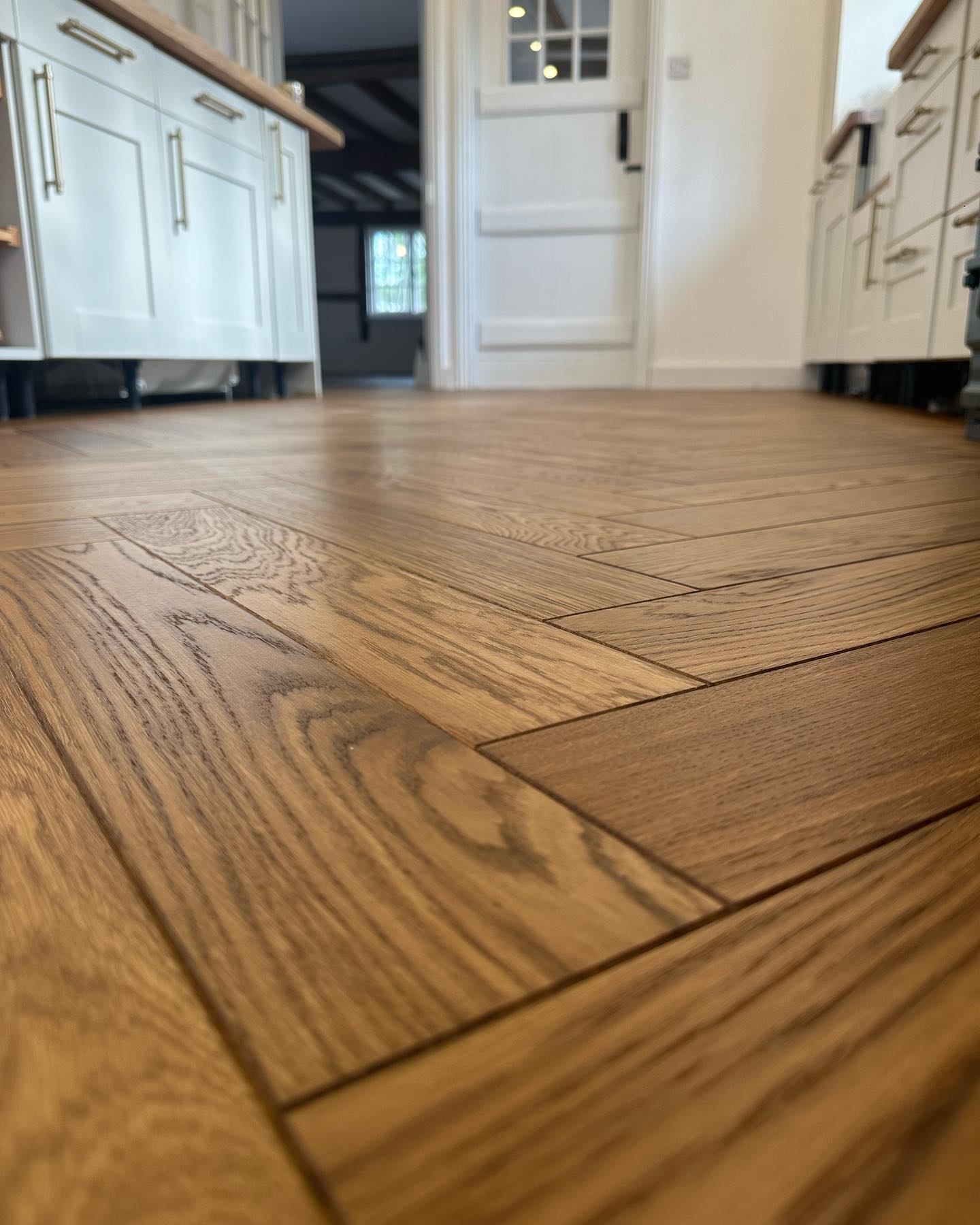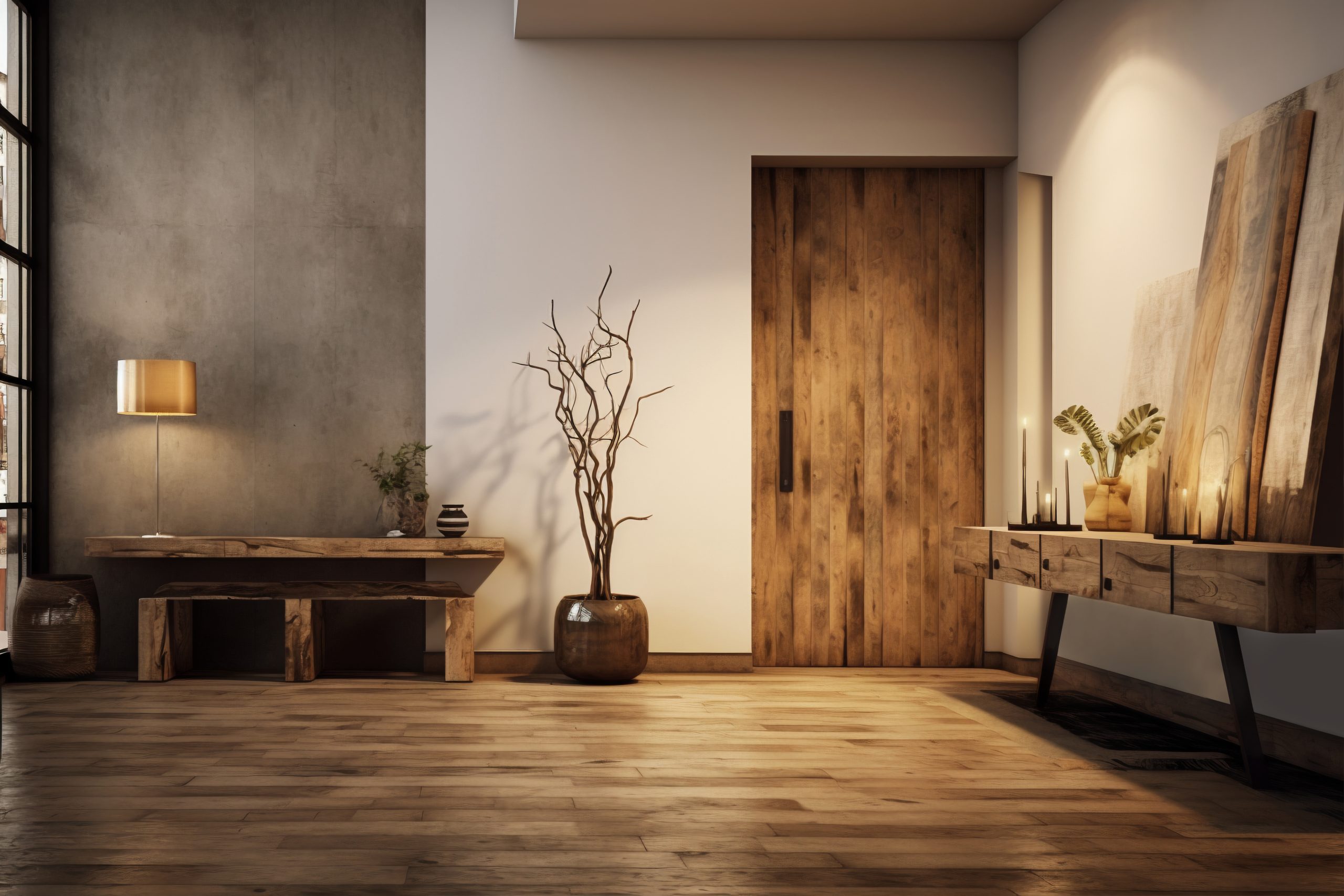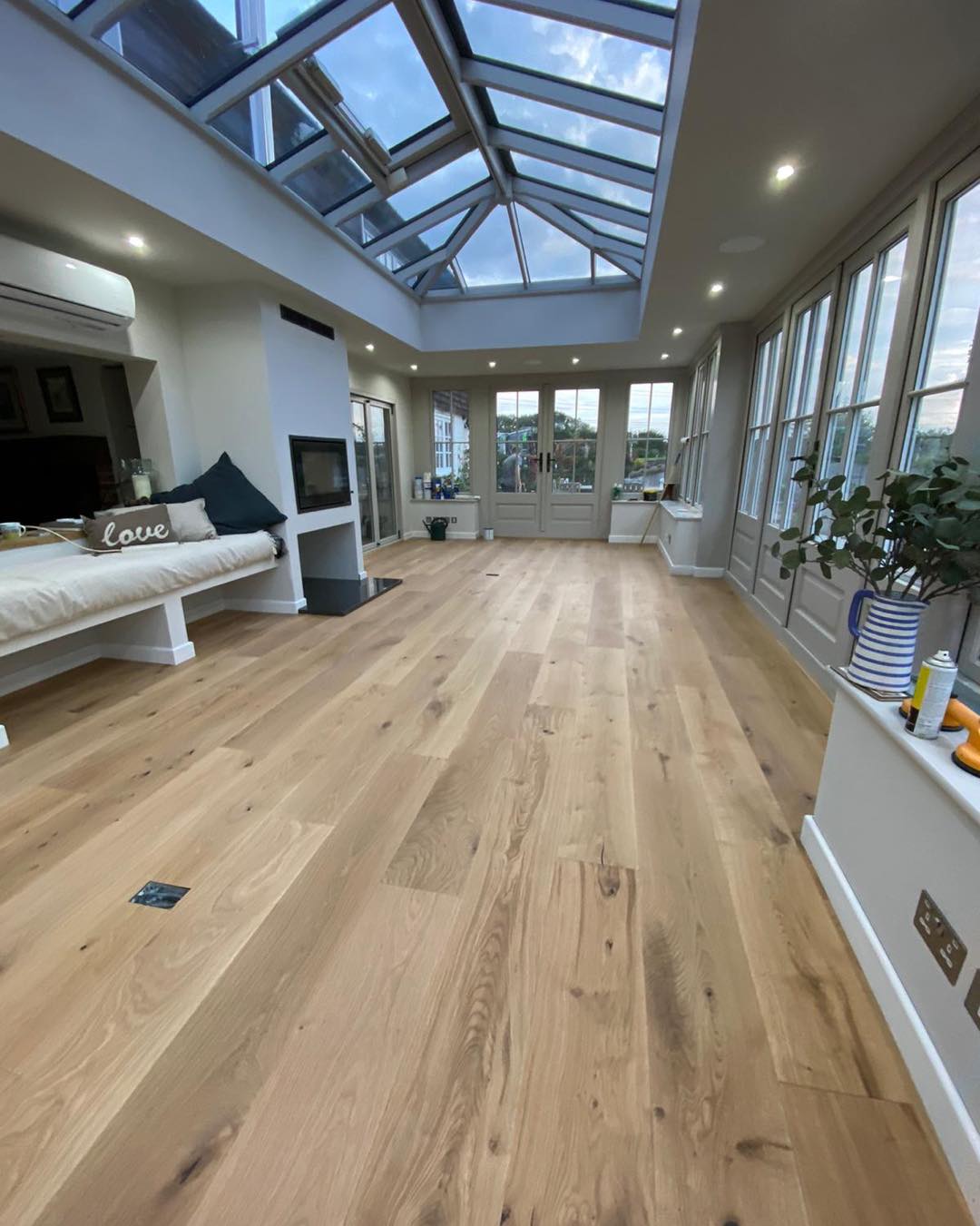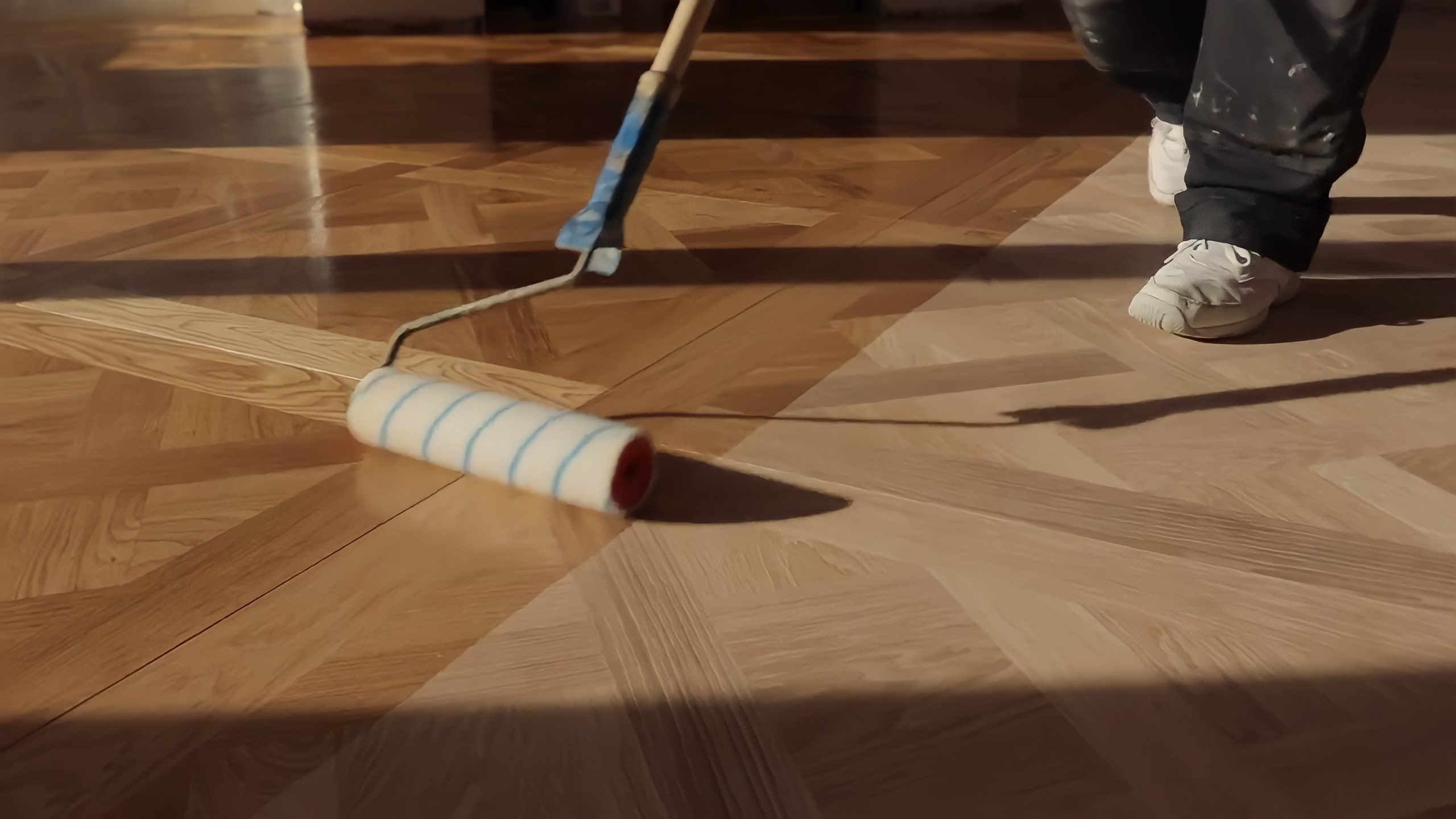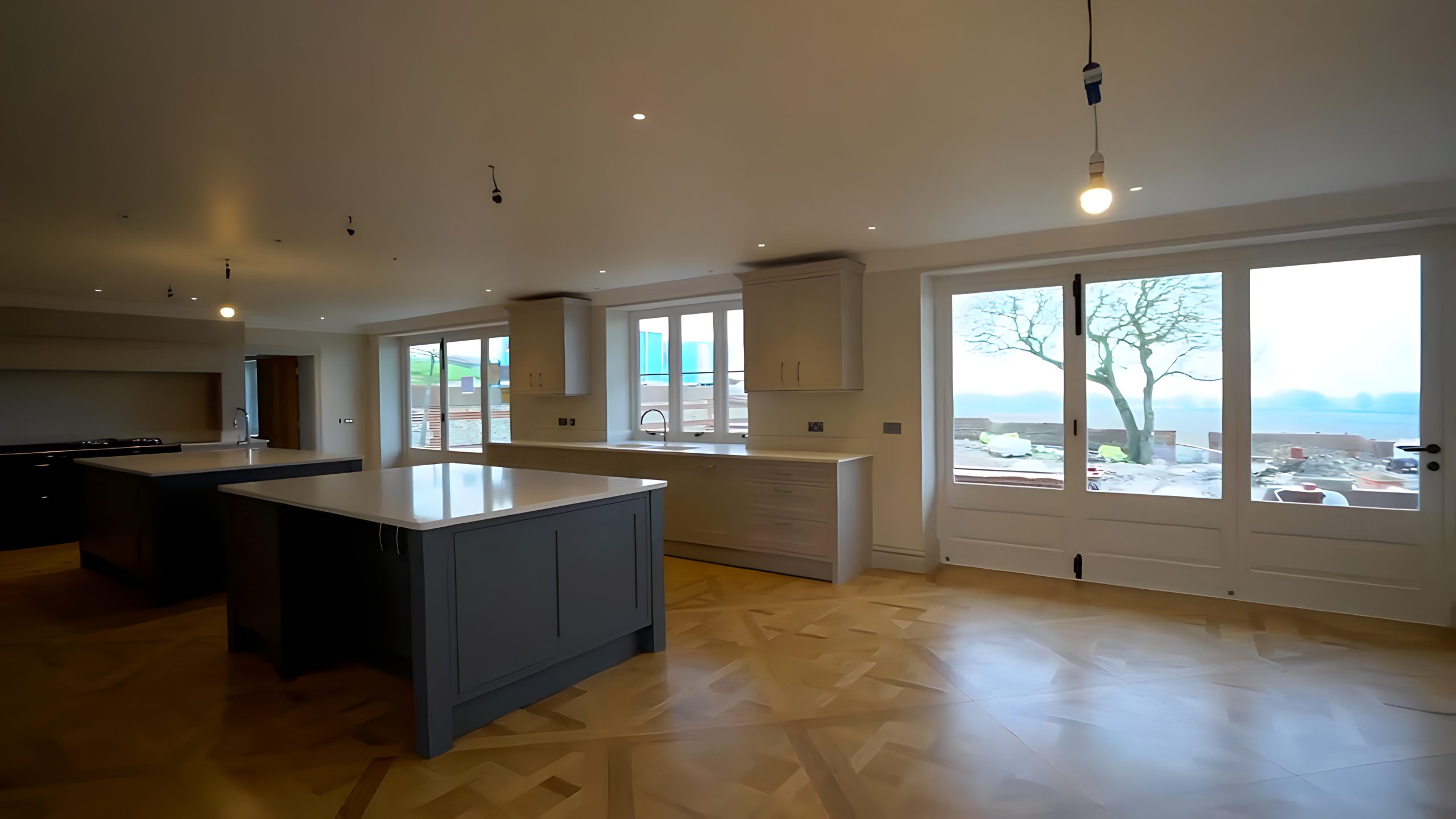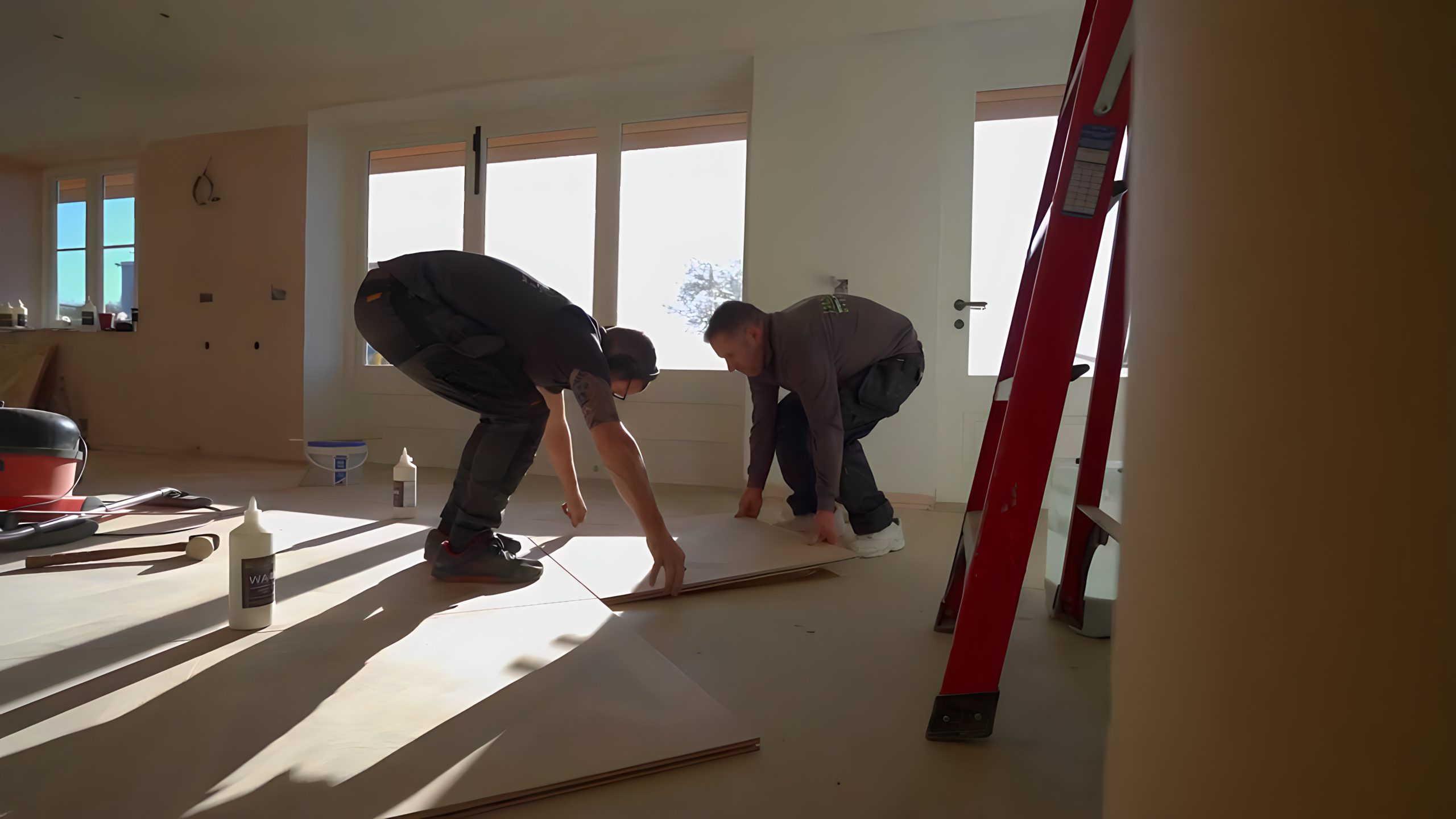Engineered underlay is the foundation for durable and comfortable wood flooring. It boosts thermal insulation, blocks moisture, and reduces noise. In this article, discover the top engineered underlay options and learn how to choose the best one for your floors.
Key Takeaways
- Thermal insulation underlays enhance warmth and energy efficiency, providing significant cost savings in heating and improving sound insulation.
- Damp Proof Membranes are essential for moisture protection, preventing damage to engineered wood flooring, especially over concrete subfloors.
- Choosing the right thickness of underlay is crucial for durability and comfort, with optimal ranges varying based on the type of flooring and room usage.
Thermal Insulation Underlays
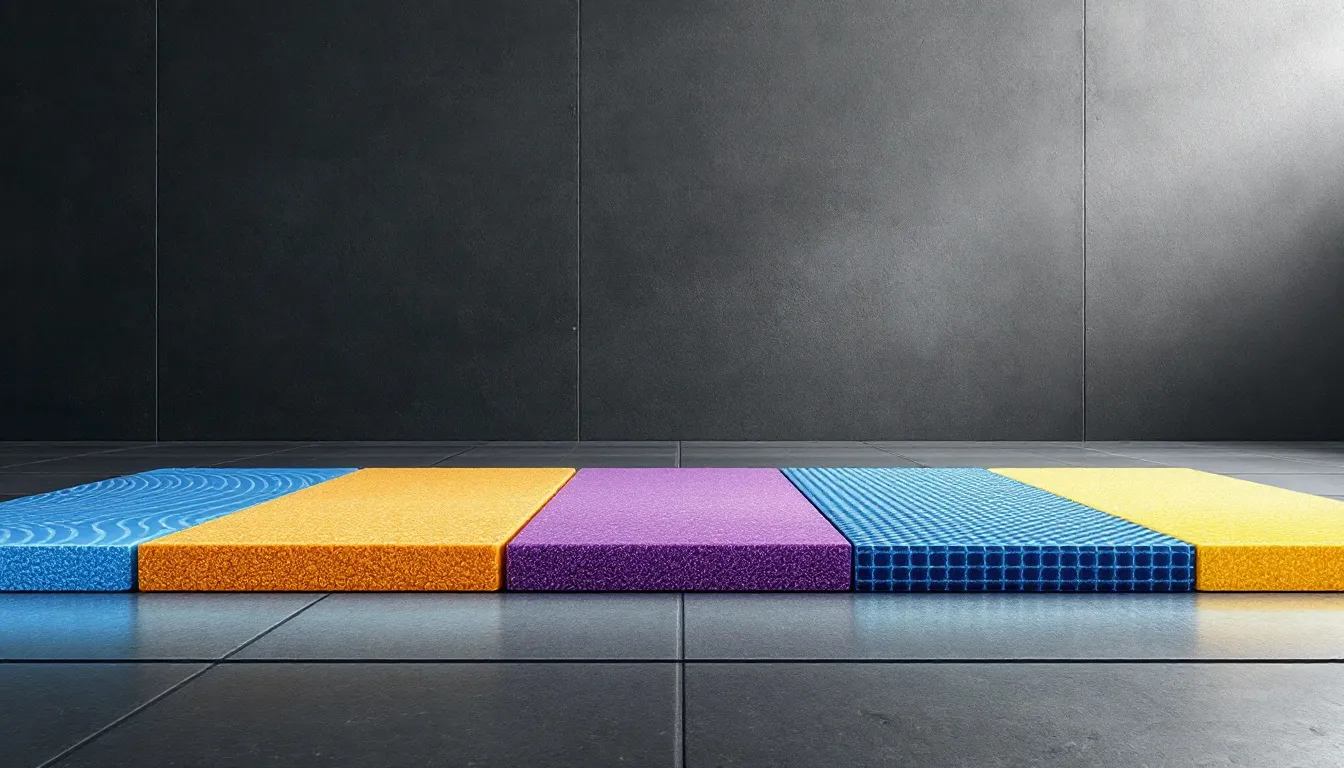
Thermal insulation underlays are specifically designed to enhance the warmth of your floors, making your home more comfortable and reducing energy costs. These underlays help reduce heat loss through the floors, enhancing energy efficiency—a key consideration in today’s eco-conscious world. Imagine stepping onto a warm floor on a chilly morning—thermal underlays can make that a reality by keeping the heat where it belongs, inside your home.
In addition to enhancing warmth, thermal underlays also play a significant role in sound insulation, making your living space quieter and more serene. High-quality thermal underlays are an investment that pays off in the long run by reducing heating costs and increasing overall comfort.
Let’s explore how these underlays work and the top picks available in the market.
How Thermal Underlays Work
Thermal underlays create a barrier that retains warmth in the room, effectively reflecting heat back into the space and making it more comfortable. This reflective property is particularly beneficial in colder climates where maintaining a warm indoor environment is essential. A high-quality underlay can significantly reduce heating costs over time, as it helps retain heat within your home.
Moreover, durable underlays contribute to better thermal insulation, which not only lowers energy bills but also enhances the overall comfort of your living space. Felt underlay, made from recycled fibres, provides a firm base and is especially beneficial for uneven floors, adding an extra layer of insulation and comfort.
Top Picks for Thermal Underlays
When it comes to thermal underlays, high-density foam underlays are often favoured for their superior insulation properties. These underlays offer excellent heat retention, making them ideal for colder environments. Cork underlay is another great option, known for its sustainable properties and effective thermal insulation, making it an eco-friendly choice for your flooring needs.
Rubber underlays are particularly durable and provide excellent thermal insulation, making them suitable for high-traffic areas. For those dealing with uneven surfaces, fibreboard flooring underlay is an excellent choice as it not only smooths out the surface but also provides significant thermal insulation.
Foam underlays often offer a combination of sound insulation and thermal efficiency, making them a popular choice for engineered wood flooring. Selecting the appropriate thermal underlay enhances energy efficiency and provides the comfort of warmer floors.
Whether you opt for high-density foam, cork, rubber, or fibreboard, each of these options has unique benefits that make them worth considering for your home.
Moisture Protection with Damp Proof Membranes
Moisture protection is a critical aspect of maintaining the longevity and performance of engineered wood flooring. Damp Proof Membranes (DPM) function as waterproof barriers, preventing moisture transmission between concrete subfloors and wood flooring. This is particularly essential in humid environments where moisture can easily penetrate and damage the flooring.
Installing a damp proof membrane is crucial in areas with high moisture levels, especially where concrete subfloors are present. Failing to maintain a dry subfloor can lead to significant problems, such as buckling and warping of the engineered flooring.
Let’s delve deeper into why DPM is essential and the types of damp proof membranes available.
Why DPM is Essential
A Damp Proof Membrane is necessary when laying floors over concrete or water-based underfloor heating systems. This membrane prevents moisture from the ground from soaking into the floor, thereby safeguarding your engineered wood flooring from potential damage. Checking the moisture content of the subfloor before installation is essential to avoid any complications during and after the process.
For optimal performance, the moisture content of wooden subfloors should be below 12%. Ensuring this before laying the underlay can prevent long-term issues such as warping and buckling, thereby maintaining the integrity and beauty of your flooring.
Types of Damp Proof Membranes
There are various types of Damp Proof Membranes suitable for different flooring needs. Polyethylene sheets are a common choice due to their effectiveness and ease of installation. Bitumen membranes offer robust moisture protection and are often used in commercial settings. Liquid-applied membranes provide flexibility and are ideal for irregular surfaces, offering a seamless barrier against moisture.
Each type of DPM provides different levels of moisture protection, making it essential to choose the right one based on your specific requirements. Choosing the right DPM ensures your engineered wood flooring stays protected from dampness and maintains its durability.
Underlays for Underfloor Heating Systems

Underlays specifically designed for underfloor heating systems help maximise heat efficiency and enhance overall comfort. These underlays often feature low TOG ratings to ensure effective heat transfer from the heating system to the floor surface. This makes them an excellent choice for anyone looking to combine the benefits of underfloor heating with the beauty of engineered wood flooring.
The right underlay for underfloor heating is key to achieving optimal warmth and comfort in your home. Let’s explore the compatibility of these underlays with underfloor heating systems and the top recommendations for heated floors.
Compatibility with Underfloor Heating
Underlays for underfloor heating systems are specifically designed to retain heat, improving the efficiency of the heating system. Selecting underlays with high heat transfer capabilities is crucial for optimal performance. Foam and foil underlays are popular choices as they combine insulation with moisture protection and are compatible with underfloor heating.
Thermal underlays with a low TOG rating are ideal for underfloor heating, allowing maximum heat transfer. Foam underlay is particularly known for its excellent cushioning properties, providing both comfort and support for engineered wood floors.
Recommended Underlays for Heated Floors
When it comes to recommended underlays for underfloor heating, the Thermal Pro X Underlay stands out due to its low TOG rating of 0.3, which promotes warm air circulation. This underlay is suitable for wood and laminate floors, ensuring optimal heat transfer and comfort underfoot.
Another excellent option is the ThermalStream Underfloor Heating Carpet Underlay, noted for its ability to enhance heat transfer while maintaining a low TOG rating.
Duralay Heatflow underlay is highly recommended for engineered wood flooring with underfloor heating due to its low TOG rating, ensuring efficient heat transfer and comfort. For engineered wood flooring installed over underfloor heating, it is recommended that the total board thickness does not exceed 18mm, with the wear layer no thicker than 5mm to ensure effective heat transfer.
Selecting the correct underlay for your underfloor heating system allows you to enjoy both warmth and the aesthetic appeal of engineered wood flooring.
High-Durability Underlays
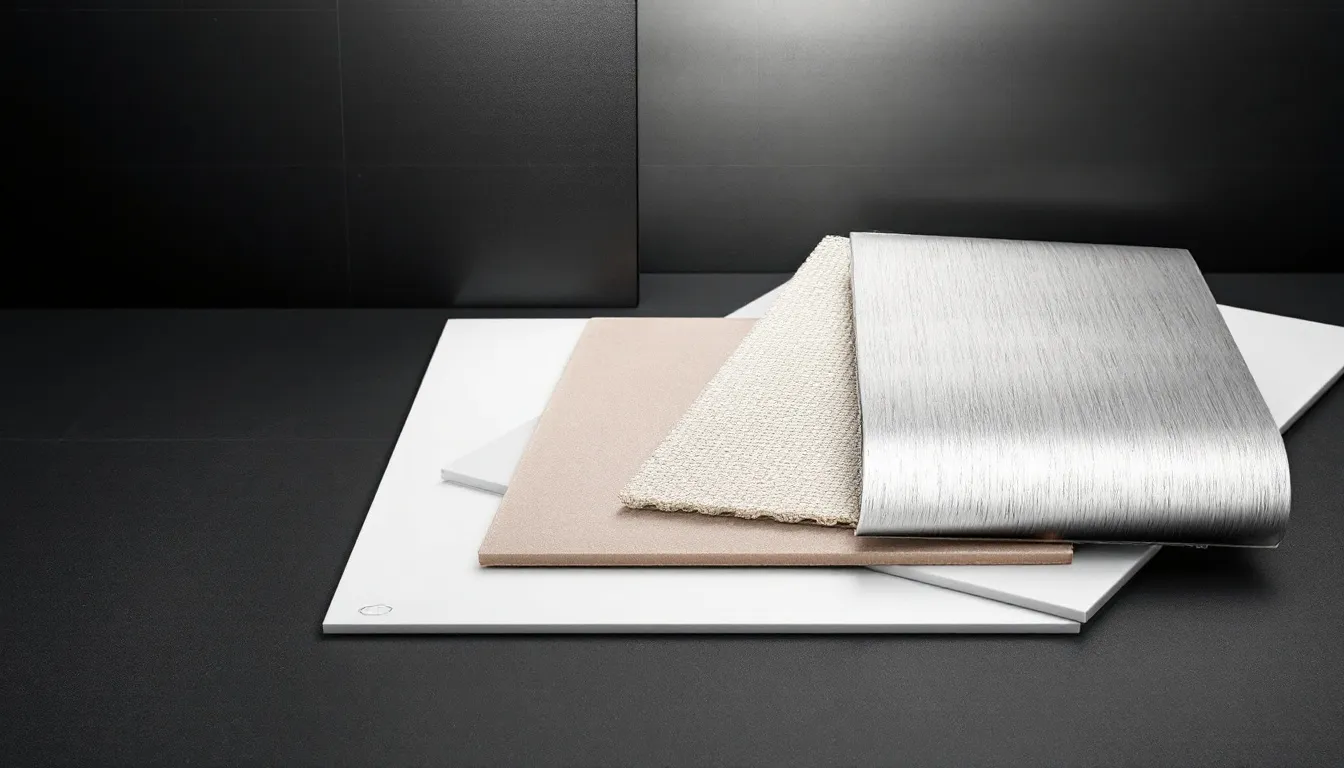
High-durability underlays are essential for ensuring long-lasting performance in engineered wood flooring. These underlays are designed to withstand heavy foot traffic and wear, making them ideal for both residential and commercial spaces. High-durability underlays can significantly extend your flooring’s lifespan, reducing the need for frequent replacements and repairs.
Durable materials such as foam and felt provide significant resilience and support for engineered floors. Let’s delve into the materials that contribute to the durability of underlays and the long-term benefits they offer.
Materials for Durability
Foam and felt are two of the most commonly used materials in high-durability underlays due to their excellent cushioning properties. Felt underlay offers significant resistance to wear and tear, making it a popular choice for enhancing the longevity of flooring. Selecting durable materials for engineered wood flooring is crucial for enhancing resilience and support.
Using durable materials like foam and felt not only improves the comfort of flooring but also extends its lifespan. These materials provide a firm base for the flooring, ensuring that it remains stable and durable over time.
Long-Term Benefits
Using high-durability underlays can significantly extend the lifespan of engineered wood flooring, reducing the frequency and cost of maintenance. By protecting the flooring from wear and tear, these underlays help maintain the appearance and performance of the floor over time.
In addition to extending the lifespan of the flooring, high-durability underlays can lead to lower maintenance costs. This makes them a cost-effective choice for homeowners looking to invest in long-lasting flooring solutions.
Choosing the Right Thickness
Selecting the right thickness of underlay is essential to ensure durability and comfort for wood flooring. High-durability underlays are specifically designed to withstand heavy foot traffic and wear, making them ideal for engineered wood flooring. The appropriate thickness of underlay enhances the longevity of the flooring by reducing wear over time.
Different floors require different underlay thicknesses for optimal performance. Let’s explore the factors to consider when choosing the right thickness and the optimal thickness for different types of flooring.
Factors to Consider
Room type, foot traffic levels, and the condition of the subfloor are essential elements that should influence the choice of underlay thickness. The type of room plays a crucial role in determining the appropriate thickness for underlays, as different rooms have different usages and requirements. For example, high traffic areas may require thicker underlays for increased durability.
The condition of the subfloor, including any uneven areas, may require a thicker underlay to ensure a level surface. Considering these factors helps you choose the underlay thickness that best meets your specific needs.
Optimal Thickness for Different Floors
For laminate flooring, an underlay thickness of no more than 5mm is recommended to maintain the integrity of the floor’s locking mechanism. Generally, for laminate flooring, an underlay thickness of 3-5mm is typically recommended to maintain structural integrity.
Engineered wood flooring typically benefits from an underlay thickness of around 5.5mm for optimal performance and comfort. For engineered wood floors, a typical underlay thickness is between 2mm and 6mm, depending on the manufacturer’s specifications.
Selecting the correct underlay thickness is crucial to ensure the durability and performance of both laminate and engineered wood flooring. Following these guidelines ensures your flooring remains stable and comfortable for years to come.
Installation Tips for Engineered Underlay
Achieving a professional installation involves proper placement and care during the underlay process. For a professional finish, lay the underlay smoothly, avoiding wrinkles or gaps. Accessories like skirting boards and trims are essential for finishing engineered wood flooring installations.
Proper installation is key to maximising the benefits of your underlay. Let’s explore the preparation steps, common installation mistakes, and where to buy high-quality underlays and accessories.
Preparation Steps
Before installing the underlay, confirm that the subfloor is thoroughly cleaned and free of any debris. Cleaning the subfloor thoroughly is crucial to ensure a smooth installation and prevent future issues with the flooring. Levelling the subfloor is critical; any height differences should not exceed 3mm over a 1-metre span. By ensuring a clean and level surface, you set the stage for a successful installation that will enhance the performance and longevity of your engineered wood flooring.
Proper preparation can significantly impact the final outcome of your flooring project. Focusing on these preparation steps helps avoid common pitfalls and ensures a professional finish that meets your expectations.
Common Installation Mistakes
Using underlay during nail-down or glue-down installations can compromise the stability of the floor. Additionally, using the wrong type of underlay for specific subfloor conditions can compromise the floor’s performance.
Awareness of these common mistakes helps avoid potential issues and ensures a successful installation that maximises the underlay’s benefits.
Where to Buy
High-quality flooring accessories can be found at specialised retailers and online stores in the UK, including options like luxury vinyl tiles. Quality flooring accessories can be sourced from online stores and physical locations across the UK.
Finding high-quality flooring accessories is essential for enhancing the performance and durability of engineered wood flooring and solid wood flooring. Choosing reputable suppliers ensures you get the best products for your flooring project.
Summary
Choosing the right underlay for engineered wood flooring is crucial for ensuring comfort, durability, and energy efficiency. From thermal insulation underlays that enhance warmth and reduce energy costs, to moisture protection with damp proof membranes that safeguard your flooring from dampness, each type of underlay offers unique benefits. High-durability underlays ensure long-lasting performance, while underlays designed for underfloor heating systems maximise heat efficiency.
By understanding the importance of selecting the right thickness and following expert installation tips, you can achieve a professional finish that enhances the beauty and functionality of your engineered wood flooring. Investing in high-quality underlays and accessories will pay off in the long run, providing you with a comfortable, durable, and efficient flooring solution.
Frequently Asked Questions
Why is thermal insulation important for underlays?
Thermal insulation underlays are crucial as they improve floor warmth and reduce energy costs by minimising heat loss, resulting in a more comfortable home.
What is a Damp Proof Membrane (DPM) and why is it essential?
A Damp Proof Membrane (DPM) is essential as it acts as a waterproof barrier, preventing moisture from damaging wooden flooring laid over concrete subfloors. This protection is crucial for maintaining the integrity and longevity of your flooring.
Are there specific underlays recommended for underfloor heating systems?
Yes, it’s advisable to use underlays with low TOG ratings, such as Thermal Pro X Underlay or ThermalStream Underfloor Heating Carpet Underlay,


